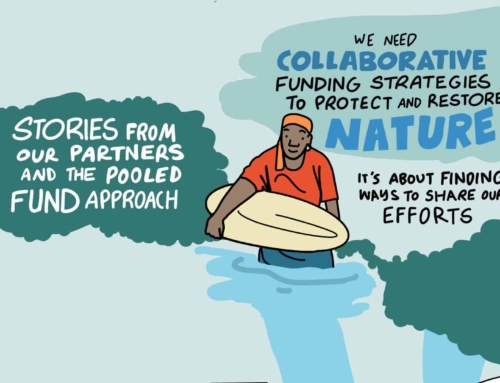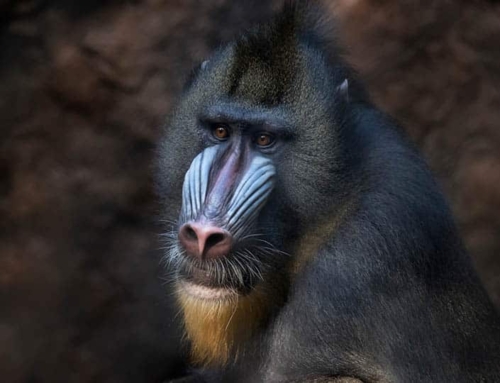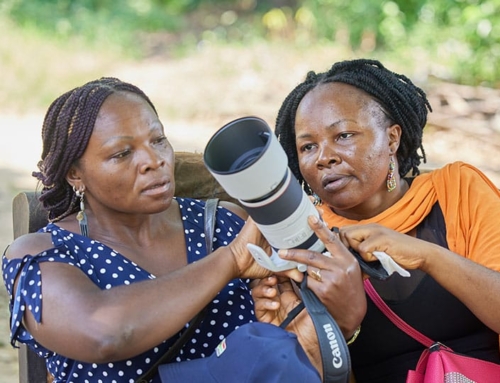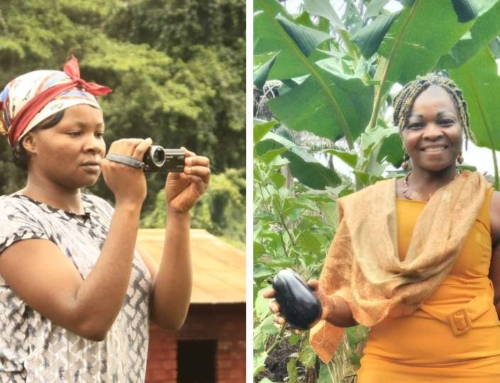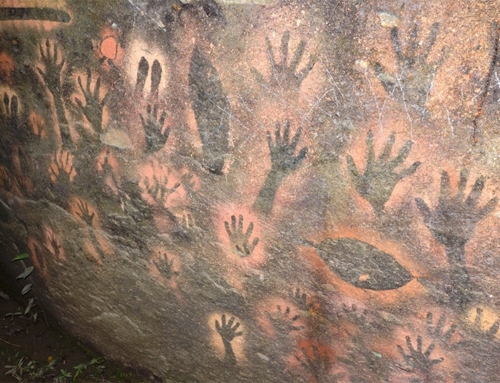The world’s largest and most important global gathering on biodiversity convened in Montreal, Canada, in December 2022. As the speeches, pledges and media coverage of the United Nations Convention on Biological Diversity Conference of the Parties 15 (COP15) fade into memory, we hear from four people who were there.
Large, global gatherings focusing on the environment will always – understandably – be subject to scrutiny: How can it make sense to fly thousands of people around the world to talk about climate change and biodiversity loss? What use are pledges and targets when they routinely fail to translate into action on the ground? While these are very legitimate questions, in this blog we want to show – through the words of our partners and members of the Synchronicity Earth team – that although these global gatherings are far from perfect, they do matter, and they can play a positive role in bringing about lasting change for the environment.
Our focus in Montreal was on centring and supporting voices that are often marginalised in these global forums – Indigenous Peoples, youth, women. We worked hard to help build momentum to support more enlightened and inclusive approaches to funding biodiversity conservation, and to push for key changes and additions to the goals and targets themselves.
Supporting our partners
Julie Gagoe Tchoko – Congo Basin Affiliate, Cameroon
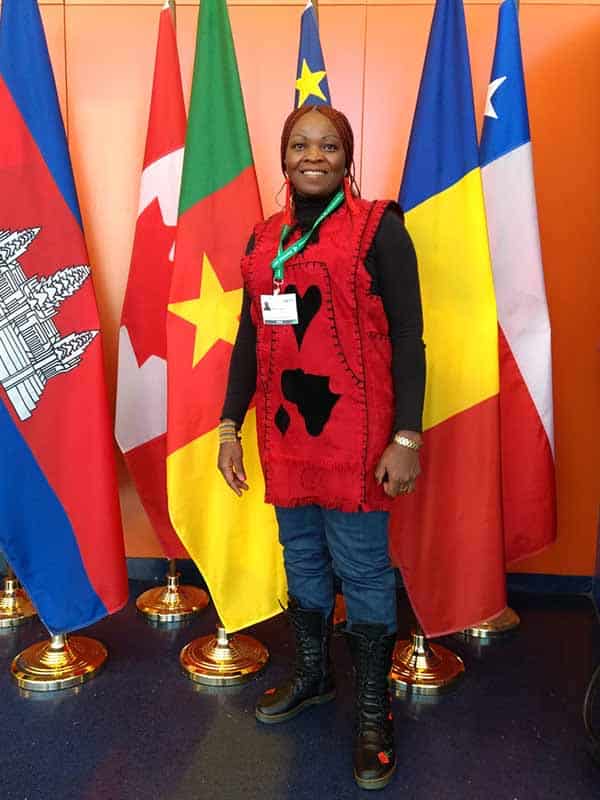
Julie Gagoe at the UN Convention on Biological Diversity Conference (COP15) in Montreal
Synchronicity Earth helped me and others to realise a dream! You can work for decades in the development space but never get the opportunity to take part in these events because there are so many obstacles: it’s already complicated enough for representatives of large international organisations, but it’s even more difficult if you’re a small, civil society organisation. The accreditation process is incredibly complicated, the logistics is exhausting, and the visa situation is a nightmare, especially when you need to travel abroad to a Western country.
But Synchronicity Earth was with us for every step of the process, helping us to realise our dream to attend a COP, and to see how these big conferences play out in reality.
When you are actually there, you realise that it is very difficult for some people and groups to have their voices heard, even if they do succeed in making it to the conference.
Over the course of COP15, Synchronicity Earth enhanced its reputation as a charity and funder whose philosophy and strategic engagement puts small organisations and those on the frontline of conservation front and centre. It was recognised as an organisation whose financial support for civil society groups was producing results, not just for biodiversity conservation, but also in helping to secure land rights and wellbeing for local and Indigenous communities. We felt very proud to be part of Synchronicity Earth, to benefit from their support and to contribute in our own way to their work.
A breakthrough for freshwater
Félix Feider – Synchronicity Earth Freshwater Programme lead
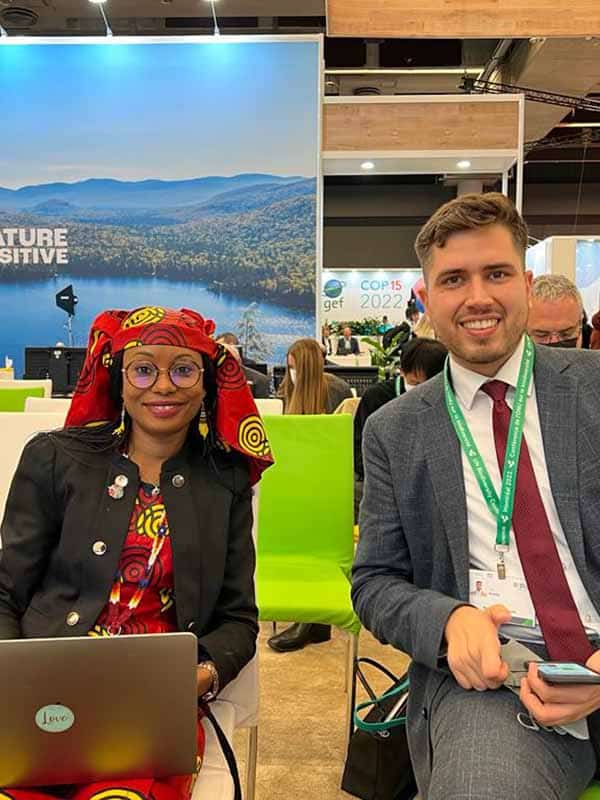
Synchronicity Earth Freshwater Programme Lead, Félix Feider, and Hindou Oumarou Ibrahim, Association for Indigenous Women and Peoples of Chad, at an event on Inland Waters
On the final day of the Conference in Montreal, close to 200 governments agreed to include the phrase “inland waters” in the Kunming-Montreal Global Biodiversity Framework, hailed by some as the Paris Agreement for biodiversity. Although it might seem trivial, the inclusion of these two small words marks a milestone for the freshwater conservation community.
Freshwater ecosystems were finally elevated to the same level as terrestrial and marine ecosystems, which provides an opportunity for drastically increased attention and support for the protection and restoration of freshwater ecosystems.
The recognition of Indigenous Peoples and local communities in the protection target (Target 3) is also crucial, as it shines a spotlight on the central role of locally-led efforts to address the freshwater biodiversity crisis. We now need to make sure that this milestone agreement and inclusion of inland waters is followed up by effective and equitable implementation on the ground.
This needs to include substantial increases in resources, capacity, and attention to freshwater ecosystems and the communities that are most dependent on these for their livelihoods and well-being, to secure a flourishing future for all life on Earth.
Speaking up for youth
Christian Schwarzer – Global Youth Biodiversity Network (GYBN)
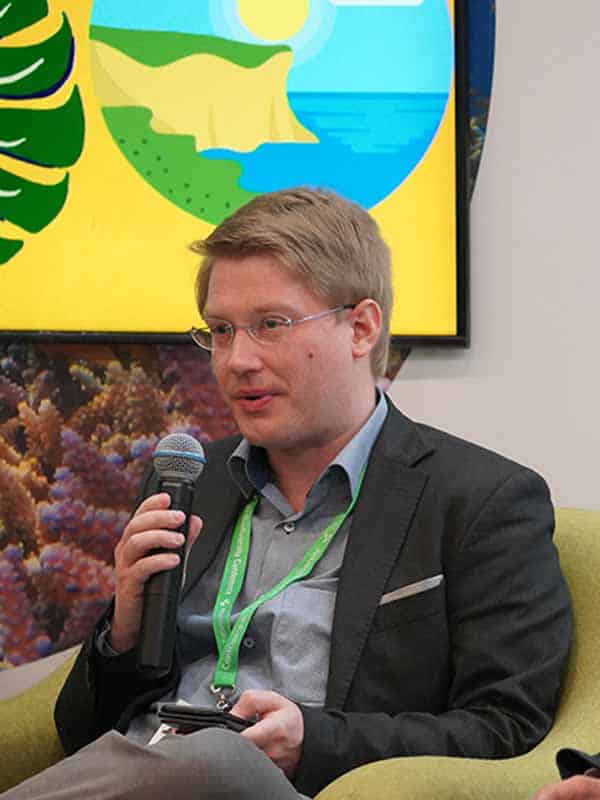
Christian Schwarzer of the Global Youth Biodiversity Network speaks at an event on Building youth-led funding partnerships
According to our initial estimates, around 250 youth from over 80 countries participated in COP15 – the largest number that we’ve ever seen for this conference! GYBN also organised a large number of events during our time in Montreal, including the COP15 Youth Summit – which saw 350 participants from all over the world, including the UN Secretary General, the CBD Executive Secretary, the Mayor of Montreal and four ministers from Quebec and Canada. And we organised the very first Youth Pavilion at a CBD COP, as well as a March for Biodiversity and Human Rights with over 3500 participants!
In terms of policy, our team managed to convince Parties to include Intergenerational Equity as a guiding principle for the implementation of the framework – a major win!
After all these years, we were delighted that biodiversity was finally getting some attention, and that there seemed to be some willingness from governments and funders to support our participation. But the challenge was that the administrative processes required by governments – but also by other funders – took ages. Even a week before the conference was due to start, we didn’t have a single cent in our bank account that we could use to bring young people to the conference. But we did have a small amount of flexible funding from Synchronicity Earth and, as I told Jessica (Sweidan, Co-Founder) when we met in Montreal, if we hadn’t had these funds, we could never have organised all these activities at COP15.
These administrative challenges sound very mundane, but they are probably one of the main obstacles when it comes to supporting youth movements to create concrete change. In my view, the support we received from Synchronicity Earth makes them unique.
I hope that other funders, including those from the public sector, will look at this kind of ‘trust-based’ funding, because this is what can unlock so much potential, and what can give my generation hope that what we’re doing is not useless, that we can be taken seriously, and that young people can be given the means to create the change that we’re all so desperately seeking.
Shifting the funding narrative
Jessica Sweidan – Co-founder, Synchronicity Earth
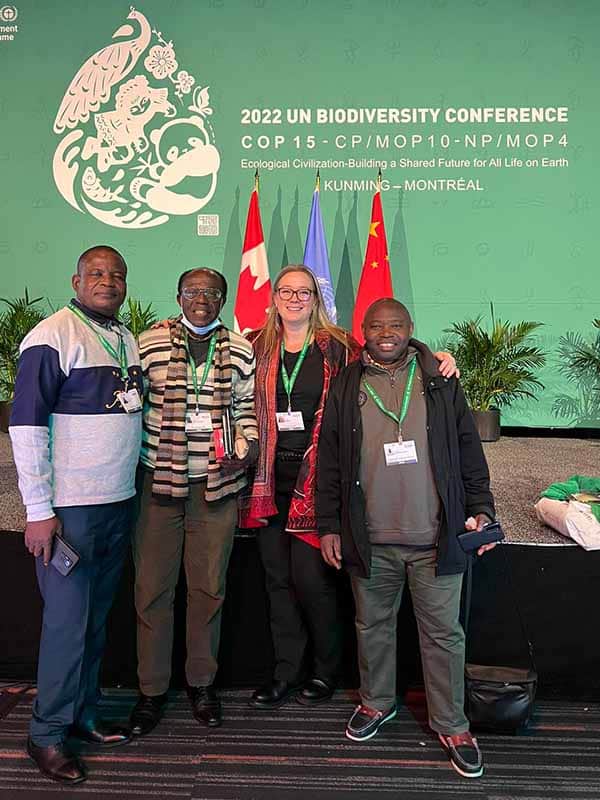
From left: Jean-Christophe Bokika (MMT), Dr Bihini Won wa Musiti (SE Congo Basin Affiliate), Jessica Sweidan, Joseph Itongwa (ICCA Consortium)
The dynamism, and almost intimacy of, the wider community and representation across COP15 stood out not only because it felt very aligned to our work, but it felt like our being there made sense. We are a relatively small organisation, but our relationships and partnerships run deep and wide. We know this about ourselves – but it came to life being there. We aren’t living in one silo within the conservation arena – we can jump between conversations about KBAs or the IUCN Red List and species monitoring, to financing biodiversity, to challenging traditional philanthropic models, to championing youth activists or Indigenous led-conservation practices. Honestly, I felt delighted to be there – as a founder and as an ally and partner to so many.
Initially we went because it is a critical forum for biodiversity, and many of the issues that have been historically underrepresented, were being centred and discussed. We wanted to listen, learn, engage, and show up. We were also in the fortunate position to help some of our partners to attend – many of whom referred to us as their family. It became evident – whether within a discussion centred on youth, human rights and Indigenous communities, finance and philanthropy, or more science-based conservation – that the way we work is deeply appreciated. I think Synchronicity Earth has emerged – alongside a handful of others – as a new kind of funder that is actively addressing strategic grant-making to assure that it is trust-based. It was really affirmational to be spotlighted as an organisation that is doing a lot right. Of course, this is a testament to the way in which our team really strives to embody our values. And it’s a rigorous process, we are always listening, learning, questioning, adjusting…
I’ve said it before, there is a culture-shift happening within much of the conservation sector. There is always more to do, but the will to seems to be catching up to the need, and things seem to be shifting. For certain Synchronicity Earth will continue to collaborate, even if across the divides, centre diverse voices and stakeholders, and hold as much as we can, to account.
Further reading:
To find out more about the goals and targets of the Kunming-Montreal Global Biodiversity Framework) and learn what some others have to say about it, the following links may be useful:
Nations adopt Kunming-Montreal Global Biodiversity Framework (Mongabay)
The Good, the Bad, and what needs to happen next (Rainforest Foundation UK)

